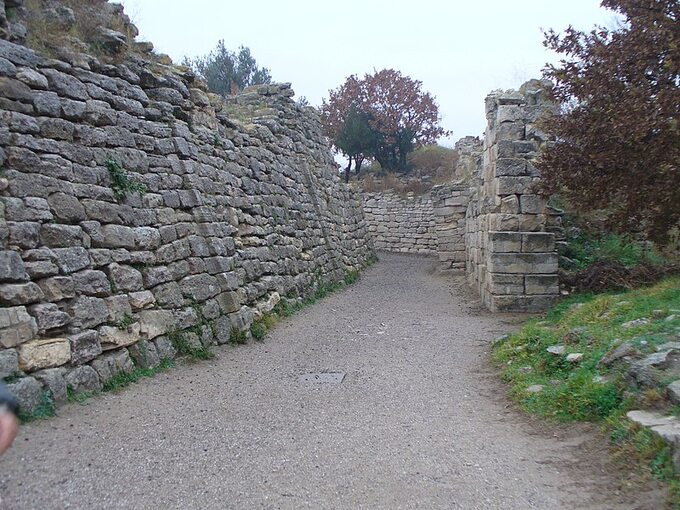The discovery of Troy is one of the largest and most famous archaeological discoveries. Although most historians believed that Troy existed only on the pages of Homer's novels, the German amateur archaeologist Heinrich Schliemann decided to search for it.
Schliemann and his road to Troy
Heinrich Schliemann was born on January 6, 1822 in Neubukov, northern Germany. When he was little, his mother died. He was raised by his father, however, due to the difficult financial situation (he had eight children), Heinrich was sent to his brother. At the age of 14, Schliemann started working first in a shop, then on a ship.
In the late 1840s, he began working for a trading company in Russia and traveled the world on business, which inspired him to explore unknown territories on his own. Eventually he quit his job as a salesman and started his own business. He was active, among others, in the United States, where he headed a bank and a trading company. Business was good and Schliemann made a fortune.

In 1864, Heinrich Schliemann left his successful business, deposited money into bank accounts and went on an expedition around the world. After two years, he lived in Paris, began studying at the Sorbonne, and then went to Greece. He divorced his first wife (a Russian) and married a Greek woman, Sophia Engastromenou, who accompanied him on subsequent expeditions and excavations.
Troy – mythical Ilion
Schliemann dreamed of Troy since childhood, when he received a book with an illustration of the burning city of Priam. He already wanted to find the mysterious city from Homer's stories.
In 1870, Schliemann traveled to Asia Minor, where he expected to find Troy. According to instructions given in Homer's Iliad, Troy should have been located on the Scamander River, opposite Cape Gallipoli. With the help of hired workers, Schliemann began excavating the Hisarlik hill. It turned out to be a hit. The hill hid the ruins of an ancient city. Schliemann was surprised to find that it was not just one city, but as many as…nine cities, built at different intervals on the ruins of previous cities.

To maintain order, individual cities were assigned numbers I to IX. The first Troy was founded in 3000 BC, the last city fell around 300 BC. Schliemann concluded that Homeric Troy was the second layer because, in his opinion, the first Troy was too old. In the layer of walls referred to as “Troy II”, Heinrich Schliemann also found traces of burning, which proved that these were the remains of Priam's Troy, which – as Homer wrote – burned.
During the excavations, many items were found, including extremely valuable gold jewelry (the artifacts were identified as the treasure of King Priam). Today these things are found in Russia. Initially, they were kept in the Ethnological Museum in Berlin, but the Red Army took them out of Germany at the end of World War II.

As further research has shown, after Schliemann's death, the Troy described by Homer is probably the city marked as “Troy VIIa”, i.e. one of the last cities of the site. This was confirmed by archaeological research in 2002. The remains found did not match Homer's descriptions, but they indicated that Troy was a fairly large urban center in the Iliad.
Schliemann – dreamer and researcher
After the discovery of Troy, Schliemann himself traveled to Mycenae, where he found five royal tombs, including the alleged tomb of King Agamemnon and the death mask, commonly called the “Mask of Agamemnon” (after some time it became clear that Agamemnon had nothing to do with them, but the mask was made several hundred years before his birth).
In the following years, Schliemann excavated Troy again. He also discovered the Greek cities of Orchomenos and Tiryns.
In 1890, Schliemann underwent ear surgery. He died on December 26, 1890 in Naples during another trip. He was buried in Athens. He became a national hero for the Greeks.
Also read:
A huge statue of Lamasu was discovered in Iraq. It is 2700 years oldAlso read:
They searched and became legends. Six places that never existedAlso read:
Top 10 Archaeological Discoveries in 2023
(translate tags)Troy
